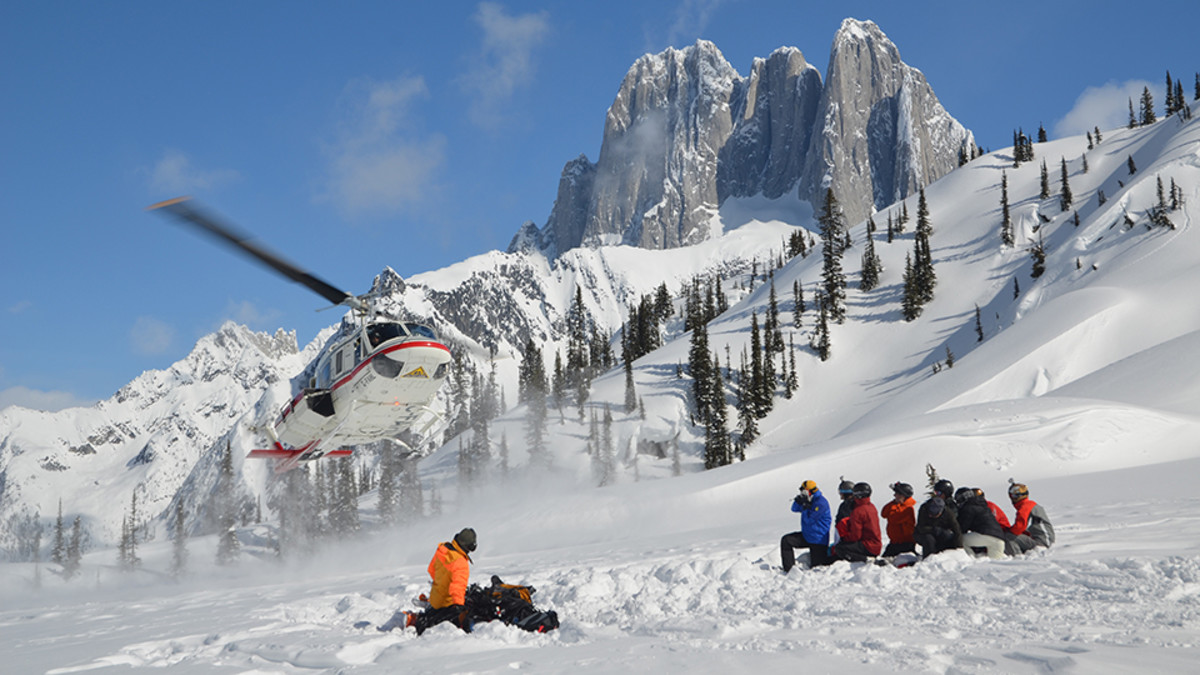Find every mountain microclimate with heli-skiing
Think of heli-skiing as an air lift instead of a chair lift. The air lifting—via helicopter, no less—can get you into untouched powder of all kinds.
For the strong intermediate to even professional skiers and snowboarders, heli-skiing offers an adventure experience unreachable by a typical chair lift. Helicopters have a knack for that.
“Heli-skiing is the ultimate,” says Joe Flannery, president of CMH Properties, the world’s founder of heli-skiing. “It is on the bucket list of every skier or rider passionate about the sport.”
From areas designated as rain forests, high desert, extreme high glacial alpine terrain to stunning glade forested tree runs, every microclimate that exists in the mountains, exists with heli-skiing.
• MORE EDGE: Mariachi Man: Prince Hubertus and the Mexican ski team
While the sport isn’t for the faint of pocketbook, it does peak interest when it comes to landing the exact style of run you want. Flannery says that the 3.1 million acres they lease in the interior mountains in British Columbia, Canada, appease the Europeans who love Swiss Alps-style skiing with big open God country terrain, mountain peaks and glaciers aplenty. The mountains also appeal to the powder hounds from the Pacific Northwest and Colorado hunting for those overhead powder shots.
CMH—along with some of its other competitors who Flannery says they work with to provide a safer experience and keep in step with changing technology—leases its mountain space from the government. For a typical CMHheli-skiing operation (you can find about 30 different companies in North America and up to 60 internationally, with the highest concentration in British Columbia) life on the snow will vary.
Flight School: Freestyle skier Gus Kenworthy's art of becoming inverted
CMH, for example, has about a dozen different lodges peppered throughout the snow terrain, accessible best from either Kelowna, B.C., or Calgary, Alberta. The lodges typically sit two to four hours from an airport, most in the backcountry. Some even require a helicopter ride to get to. This “adult summer camp” style lodge then serves as the base for however many days you plan to powder up.
A typical day starts with matching like-minded skiers into the same groups. After breakfast, the helicopters come into play. CMH is the only outfit in the world that owns and operates its own fleet of helicopters, about 40 in all, and most commonly flies the Bell 212, holding up to 11 guests. Each lodge will have two helicopters leapfrogging groups farther and father into the mountains.
“You might fly for 10 minutes and then ski 500 feet to 6,000 feet per run depending on the quality of the snow,” Flannery says. “The snow conditions at 10,000 feet are often quite different than 1,000 feet. If we can find great snow from 10,000 feet to the valley bottom, our longest run is 7,200 feet.”
Typically skiers find initial runs in the 1,000 to 2,000 feet range and they get longer and bigger as the day goes on and the stability and quality of the snow is deemed safe. A safety ship in front of the guests inspects the mountain, even using explosives and dropping bombs to remove features of concern.
• MORE EDGE: How Lindsey Jacobellis fell in love with snowboarding again
Of course, as with any industry, heli-skiing has a wide array of levels, ranging from single entrepreneurs leasing helicopters for day trips with no safety precautions or frills, to a variety of lodge-based operations, largely in either Alaska or British Columbia that can span all the way up to four-star-style experiences.
Every goal remains the same, though: Air lifting for the most intense skiing or snowboarding experience.
Tim Newcomb covers stadiums, design and gear for Sports Illustrated. Follow him on Twitter at @tdnewcomb.







